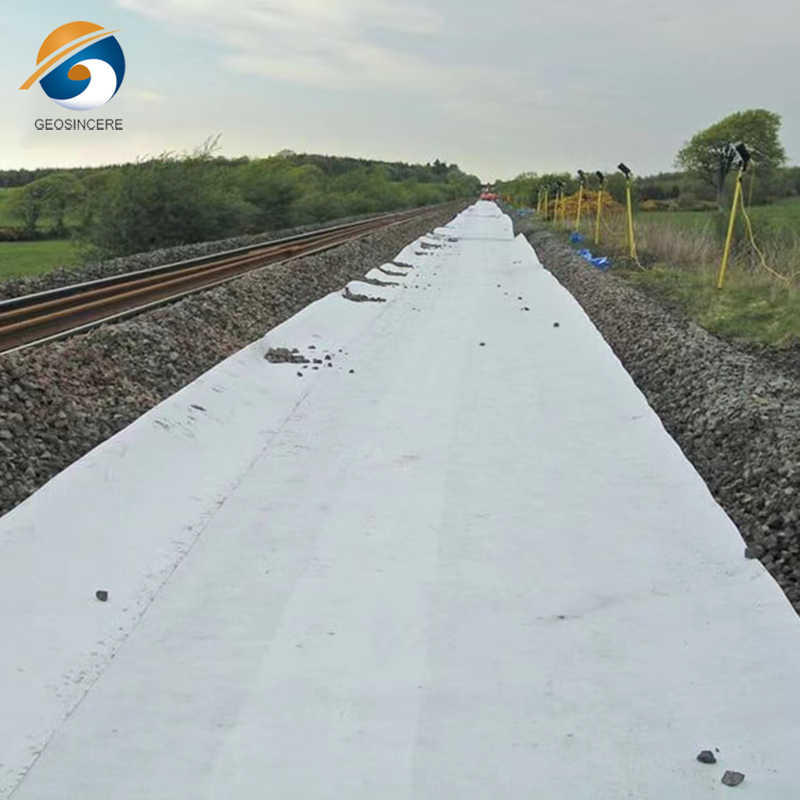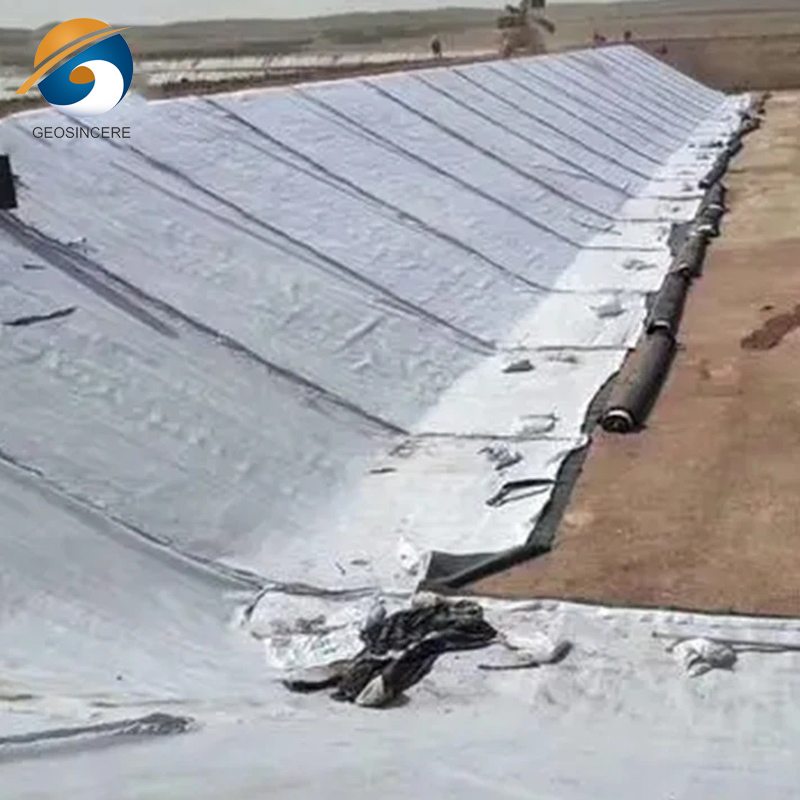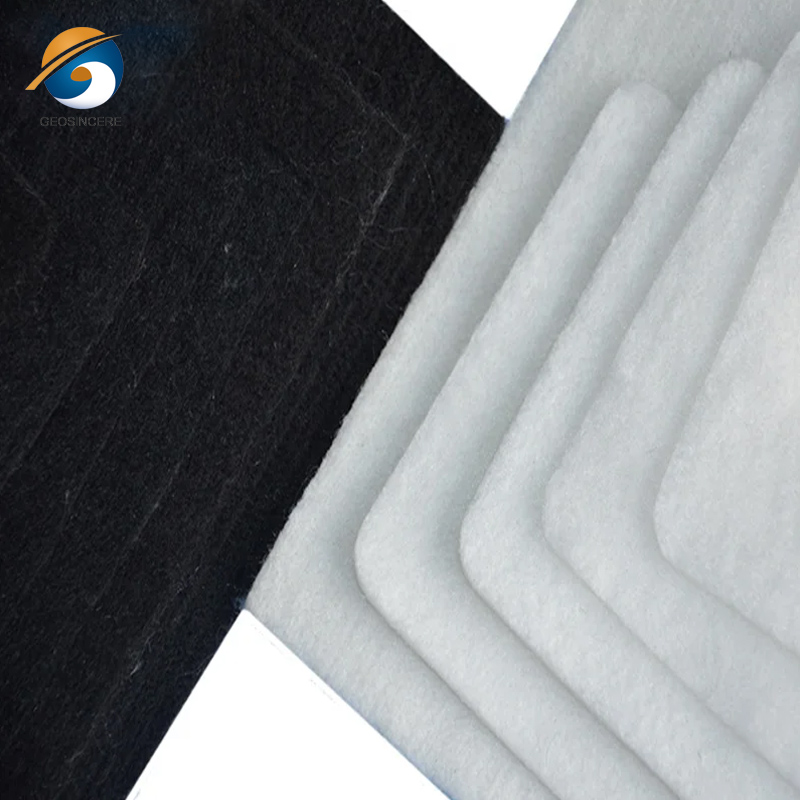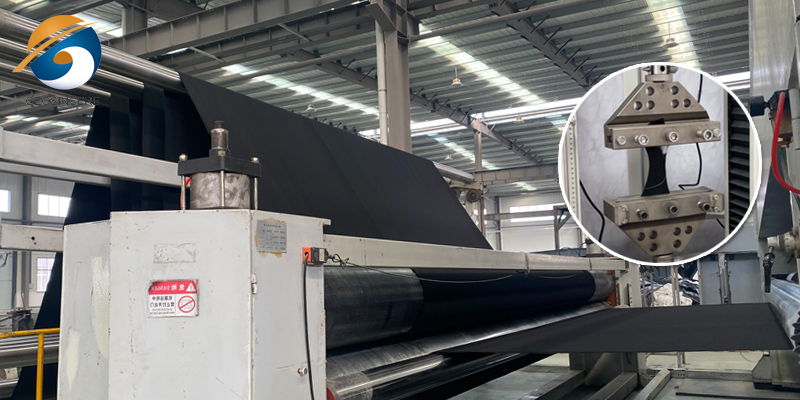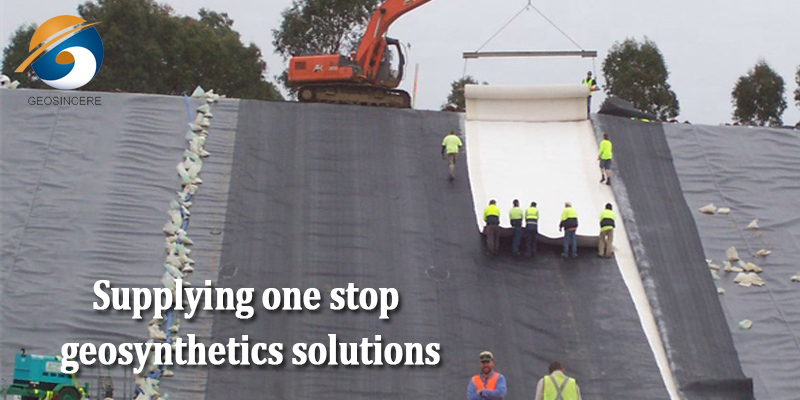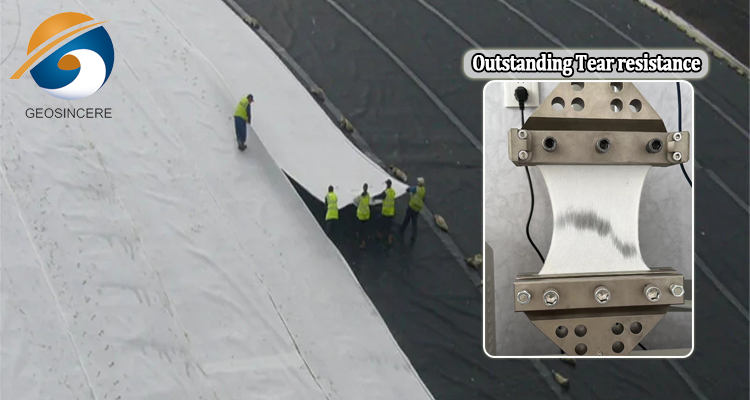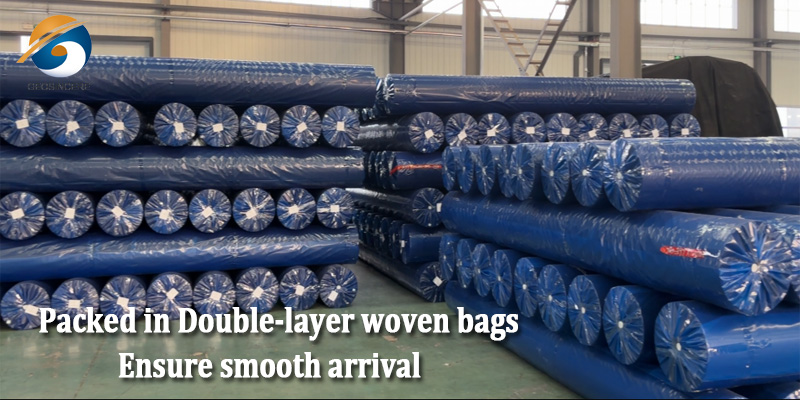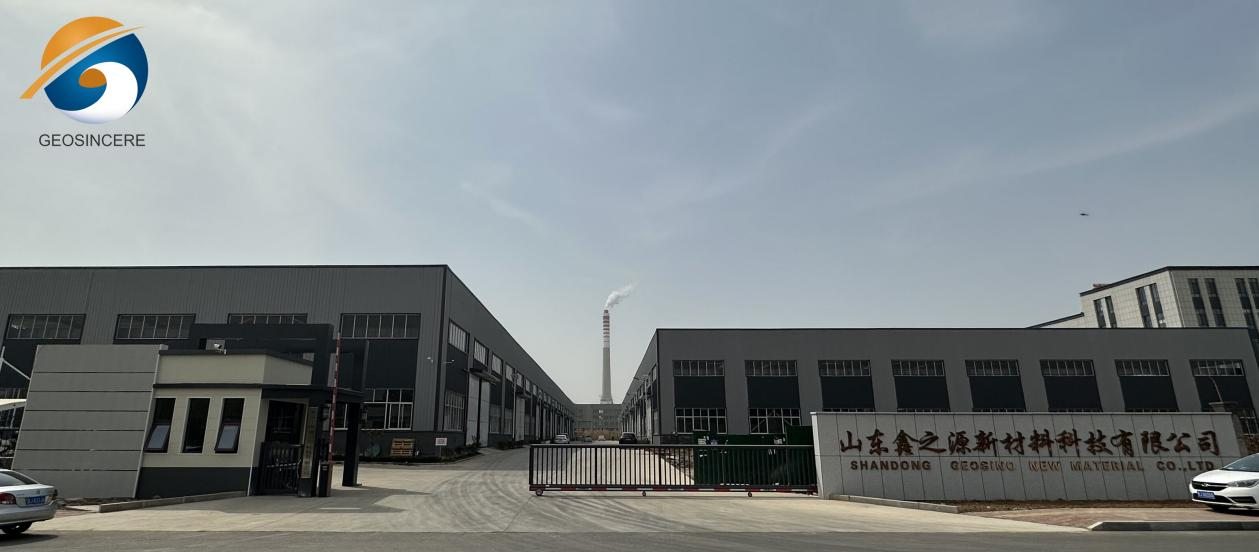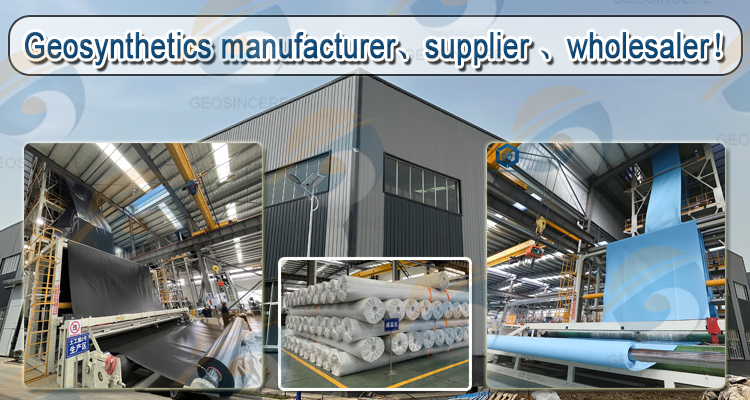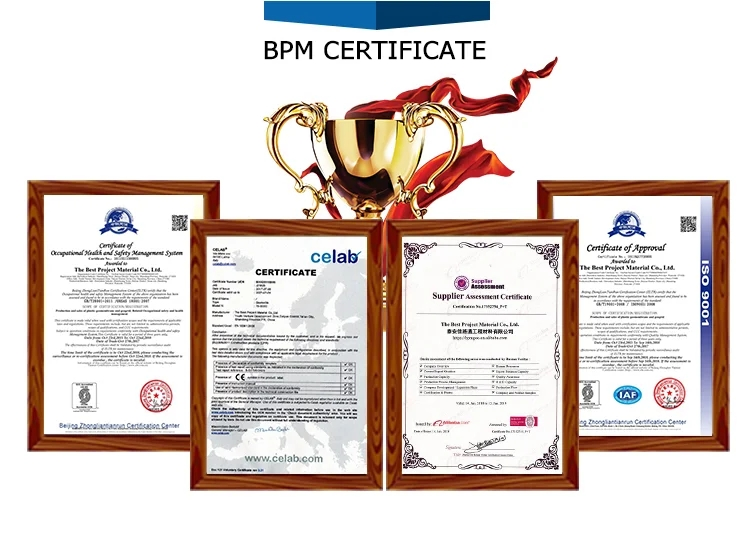Non Woven Polypropylene Geotextile Fabric Separation Layer
Non-woven polypropylene geotextile fabric is commonly used as a separation layer in various geotechnical applications. Non-woven polypropylene geotextile fabric is used as a separation layer in road construction projects. It is placed between the subgrade (natural soil) and the aggregate base or sub-base layers. The geotextile fabric prevents the mixing of the subgrade soil with the aggregate layers, providing separation and maintaining the structural integrity of the road.
Non-woven polypropylene geotextile fabric as a separation layer offers several benefits, including filtration, separation, and enhanced performance in various geotechnical applications. Its high strength, durability, and resistance to biological and chemical degradation make it a reliable choice for maintaining the integrity and functionality of infrastructure projects.
Non-woven polypropylene geotextile fabric is commonly used as a separation layer in geotechnical applications. Non-woven polypropylene geotextile fabric is used as a separation layer in road construction projects. It is placed between the subgrade soil and the aggregate layers. The geotextile fabric prevents the mixing of the subgrade soil with the aggregate, providing separation and enhancing the stability and performance of the road.
Non-woven polypropylene geotextile fabric is used as a separation layer in landscaping and gardening applications. It can be placed between the soil and various materials such as mulch, gravel, or decorative stones. The geotextile fabric acts as a barrier, preventing the soil from mixing with the materials, reducing weed growth, and improving drainage.Non-woven polypropylene geotextile fabric is used as a separation layer in erosion control projects. It can be placed on slopes, embankments, or riverbanks to prevent soil erosion. The geotextile fabric allows water to pass through while preventing the migration of soil particles, helping to stabilize the soil and protect against erosion.
Non-woven polypropylene geotextile fabric is used as a separation layer in the construction of retaining walls and slopes. It is placed between the backfill material and the wall or slope face. The geotextile fabric acts as a barrier, preventing the mixing of the backfill material with the soil and enhancing the stability of the structure.Non-woven polypropylene geotextile fabric is used as a separation layer in landfill construction. It is placed between the landfill liner (such as HDPE geomembrane) and the underlying soil. The geotextile fabric acts as a protective barrier, preventing the intrusion of fine particles from the soil into the liner system and improving the overall integrity of the landfill.
Non-woven polypropylene geotextile fabric is used as a separation layer in railroad construction. It is placed between the subgrade soil and the ballast layer. The geotextile fabric prevents the mixing of fine soil particles with the ballast, providing separation and enhancing the stability and performance of the railroad track.Non-woven polypropylene geotextile fabric as a separation layer provides benefits such as filtration, separation, and reinforcement in various geotechnical applications. Its permeability, durability, and resistance to biological degradation make it a suitable choice for creating effective separation in construction projects.
Parameter
Item | Test Method | Unit | 10 | 15 | 20 | 25 | 30 | 35 | 40 | 45 | 50 | 60 |
Index Properties | ||||||||||||
Ultimate Tensile Strength. MD | ASTM D4595 | KN/m | 1 | 11 | 14 | 17 | 19 | 24 | 27 | 30 | 37 | 41 |
Ultimate Tensile Strength, TD | ASTM D4595 | KN/m | 6 | 10 | 12 | 15 | 17 | 21 | 25 | 28 | 34 | 38 |
Tensile Elongation | ASTM D4595 | % | 45 | 45 | 50 | 50 | 50 | 60 | 60 | 60 | 60 | 60 |
Grab Tensile Strength. MD | ASTM D4632 | N | 400 | 600 | 850 | 1000 | 1250 | 1450 | 1700 | 1900 | 2100 | 2500 |
Grab Tensile Strength, TD | ASTM D4632 | N | 350 | 550 | 700 | 900 | 1100 | 1250 | 1450 | 1600 | 1800 | 2150 |
Grab Elongation | ASTM D4632 | % | 45 | 45 | 50 | 50 | 50 | 60 | 60 | 60 | 60 | 60 |
Trapezoid Tear Strength. MD | ASTM D4533 | N | 160 | 300 | 350 | 430 | 490 | 540 | 630 | 710 | 770 | 920 |
Trapezoid Tear Strength, TD | ASTM D4533 | N | 140 | 270 | 330 | 400 | 450 | 510 | 610 | 690 | 750 | 900 |
CBR Puncture Strength | ASTM D6241 | N | 1000 | 1800 | 2300 | 2700 | 3200 | 3600 | 4400 | 4800 | 5800 | 6900 |
Apparent Opening Size 090 | ASTM D4751 | mm | 0.12 | 0.11 | 0.11 | 0.10 | 0.09 | 0.08 | 0.08 | 0.08 | 0.08 | 0.08 |
Water Flow Q100 | ASTM D4491 | L/m2/s | 250 | 235 | 220 | 200 | 185 | 165 | 125 | 110 | 90 | 80 |
Weight | ASTM D5261 | G/m2 | 100 | 150 | 200 | 250 | 300 | 350 | 400 | 450 | 500 | 600 |
Thickness | ASTM D5199 | mm | 1.2 | 1.8 | 2.3 | 2.9 | 3.2 | 3.6 | 3.9 | 4.2 | 4.4 | 4.8 |
Roll width | / | m | 6 | 6 | 6 | 6 | 6 | 6 | 6 | 6 | 6 | 6 |
Roll Length | / | m | 300 | 200 | 150 | 100 | 100 | 100 | 80 | 80 | 50 | 50 |
Non Woven Polypropylene Geotextile Fabric Separation Layer Features
Non woven polypropylene geotextile fabric separation layer possesses several notable features that make it an excellent choice for various applications. These features include:
High Tensile Strength
Puncture Resistance and Durability
Anti-corrosion Properties
Anti-aging Characteristics
Excellent Permeability and Filtration
Acid and Alkali Resistance
Increased Performance Life of the Road
Withstands Tough Construction Loading
Easy Installation
Applications of Non Woven Polypropylene Geotextile Fabric Separation Layer
Non-woven polypropylene geotextile fabric is commonly used as a separation layer in a wide range of geotechnical applications. Here are some key applications of non-woven polypropylene geotextile fabric as a separation layer:
Road Construction: Non-woven polypropylene geotextile fabric is widely used in road construction projects. It is placed between the subgrade (existing soil) and the aggregate base or sub-base layers. The geotextile fabric acts as a separation layer, preventing the mixing of the subgrade soil with the aggregate layers. This helps to maintain the structural integrity of the road, enhance drainage, and reduce the potential for rutting and subgrade deformation.
Landscaping and Gardening: Non-woven polypropylene geotextile fabric is used in landscaping and gardening applications. It can be placed between the soil and decorative stones, mulch, or gravel to create a separation layer. This prevents the soil from mixing with the decorative material, ensuring proper drainage and preventing weed growth. It is commonly used in garden beds, pathways, and hardscape installations.
Erosion Control: Non-woven polypropylene geotextile fabric is employed in erosion control projects. It can be used on slopes, embankments, and riverbanks to prevent soil erosion. The geotextile fabric acts as a separation layer between the soil and erosion control materials such as riprap or gabion baskets. It allows water to pass through while preventing the migration of soil particles, ensuring stability and reducing erosion.
Landfill Construction: Non-woven polypropylene geotextile fabric is used in landfill construction. It is placed between the landfill liner (such as HDPE geomembrane) and the underlying soil. The geotextile fabric acts as a separation layer, preventing the intrusion of fine particles from the soil into the liner system. This helps to maintain the integrity and effectiveness of the landfill liner, reducing the risk of contamination.
Railway Track Construction: Non-woven polypropylene geotextile fabric is utilized in railway track construction. It can be placed between the subgrade soil and the ballast layer. The geotextile fabric acts as a separation layer, preventing the mixing of fine soil particles with the ballast. This enhances the load-bearing capacity of the track, reduces settlement, and helps to maintain proper drainage.
Retaining Walls and Slopes: Non-woven polypropylene geotextile fabric is used in the construction of retaining walls and slopes. It can be placed between the backfill material and the wall or slope face. The geotextile fabric acts as a separation layer, preventing the migration of fine soil particles into the backfill material. This helps to maintain proper drainage, stability, and long-term performance of the structure.
Drainage Systems: Non-woven polypropylene geotextile fabric is employed in drainage systems. It can be placed between the aggregate or stone backfill and the surrounding soil. The geotextile fabric acts as a separation layer, allowing water to pass through while preventing the migration of fine soil particles into the drainage system. This helps to maintain the functionality and efficiency of the drainage system.
Non-woven polypropylene geotextile fabric as a separation layer offers several benefits, including filtration, separation, and enhanced performance in geotechnical applications. Its lightweight, durable, and permeable characteristics make it a reliable choice for maintaining the integrity and functionality of various construction projects.
Product Packing
Selling Packing:Customer's company Logo mark can be designed and added.
Outer Packing:Packed in Double-layer woven bags to ensure smooth arrival and avoid rough handling.
Transport Packing: Put in the container.
Company Profile
Shandong GEOSINO New Material Co.,Ltd (Brand:Geosincere) is the professional geomembrane and geosynthetics manufacturer and wholesaler located in Taian City, Shandong Province, PRChina. We are not a local overseas distributer, we are an professional manufacturer, exporter and wholesaler for such geosynthetic products as geomembanes, geotextiles, geogrids, geocells, geosynthetic clay liners (GCLs), drainage boards, etc. GEOSINCERE is always committed to geomembrane research and development, manufacturing and installation services. We can provide our customers with most extensive lines of geomembranes and geotextiles for civil, mining, environmental and aquaculture engineering applications.
GEOSINCERE has been keeping on investing in technological innovation, manufacturing facilities improvement and turnkey engineering abilities. We have invested 10 million dollars into our manufacturing factory which is equipped with state-of-the-art automatic production lines to manufacture high quality geomembranes and other geosynthetics with optimized processes. GEOSINCERE has over 160 employees and its own 24,000 square meters state-of-art manufacturing factory with many automatic geosynthetic production lines, professional machines and testing equipment.Our extensive lines of geosynthetics products are well known for their ensured quality, high performance, excellent durability and best cost effectiveness. GEOSINCERE brand geomembranes and other geosynthetics products and solutions can meet your requirements by our solid technologies, innovative engineering solutions and excellent customer services. GEOSINCERE always tries our best to solve the most complex civil, mining and environmental challenges with our innovative and high performance geosynthetic products. Quality assurance, factory price and fast delivery time are our competitive advantages.
Hope to be your partner!

